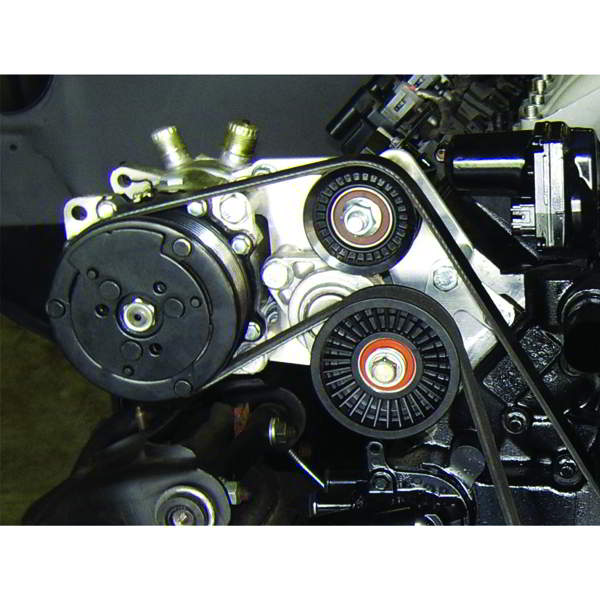Compressor Mounting
As we mentioned earlier, the way the compressor fits into your available space and how it mounts to your engine is a serious consideration. Today most aftermarket compressor brackets are designed to mount Sanden type compressors and to fit within the limited engine compartments of classic vehicles. The axial compressors are easiest to mount, because of their alternator style mounting. Adapters are available to retrofit the Sanden onto older York type compressor brackets. See Brackets.

Because the compact Sanden compressors operate so smoothly, they require fewer mounting brackets as well. Generally, engineering a bracket for air conditioning compressors follows the same principles as any other bracket design and fabrication: the simpler the better. There are a few things, however, that are common with all engine brackets. First, you must have a way to adjust the tension of the driving belt. Sliding the compressor, or using an idler pulley mounted on an adjustable eccentric are the simplest ways to adjust belt tension. On the driving belt, there is always a tight side and a slack side. The tensioner must always be installed on the slack side of the driving belt. This increases the bearing life of the idler by putting less load on it and reduces “belt flop,” which is always greatest on the slack run side of the belt. Second, the bracket should also allow enough belt contact on all pulleys that are driving or driven by that belt. This area is called the “arc of contact.” And finally, the entire mounting system must be as rigid as possible to eliminate “rotational harmonics.” Even tiny movements of the drive components can eventually cause metal fatigue and bracket failure. See Brackets for a complete selection of our engine-specific mounting brackets. And for the ultimate engine accessory drive systems, check out our street and track-tested Front Runner Engine Drives.
NEXT: Selecting the Right Evaporator –>>

